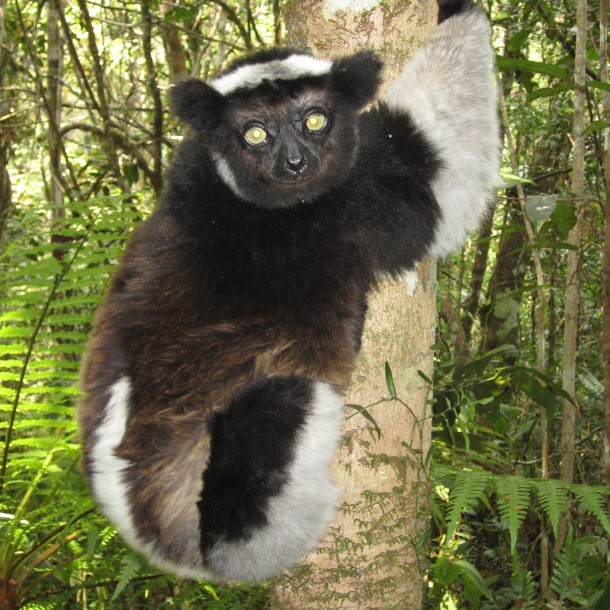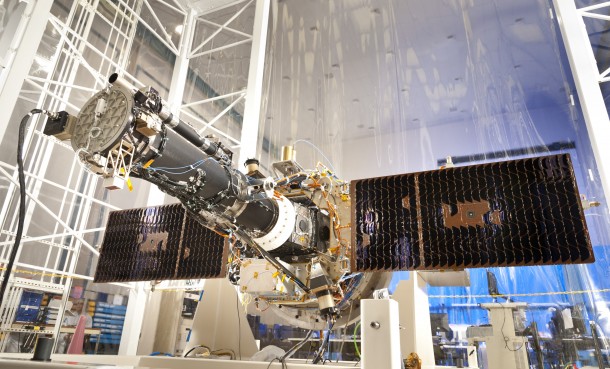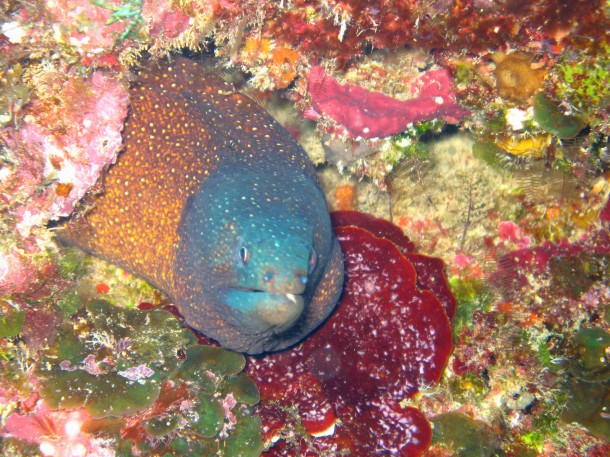
Artist’s concept of a new view of the Milky Way. Scientists have discovered the Milky Way’s elegant spiral structure is dominated by two arms wrapping off the ends of a central bar of stars. Our galaxy was previously thought to possess four major arms. (NASA)

Native to Madagascar, this is an indri, one of the largest living lemurs in the world. (Meredith Barrett)

This is a Spallation Neutron Source cavity assembly in the clean room the Thomas Jefferson National Accelerator Facility in Virginia. It’s a piece of a particle accelerator scientists use to provide the most intense pulsed neutron beams in the world. (Jefferson Lab)

NASA will use this spacecraft, seen here with its solar panels deployed in a clean room at Lockheed Martin in Sunnyvale, California, for its Interface Region Imaging Spectrograph (IRIS) mission scheduled for launch this April. (Lockheed Martin)

Immune system cells, called macrophages, normally engulf and kill intruding bacteria but sometimes the microbes, shown in red, find a way to escape into the interior of the cell where it can multiply and invade other cells. (Miao lab, UNC School of Medicine)

A large male purple marsh crab (Sesarma reticulatum) clips cordgrass with its claws. These crabs are nocturnal and typically live in burrows during the day to stay moist and avoid predators. (Tyler Coverdale)

This is a single five-minute exposure taken recently in Buenos Aires on an Argentinian summer night. It shows not only Earth clouds but starry clouds, the pinkish glow of the Carina Nebula and Small Magellanic Clouds. The line arcing from the center of the right side to the lower left is the orbiting International Space Station. (Photo & Copyright: Luis Argerich)























Comments are closed.